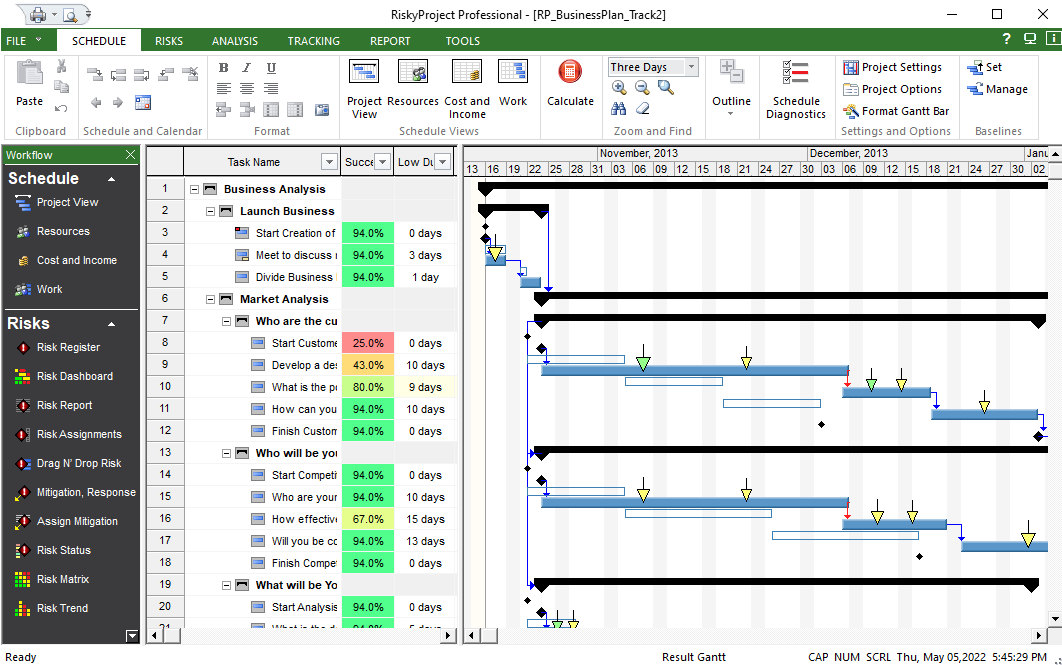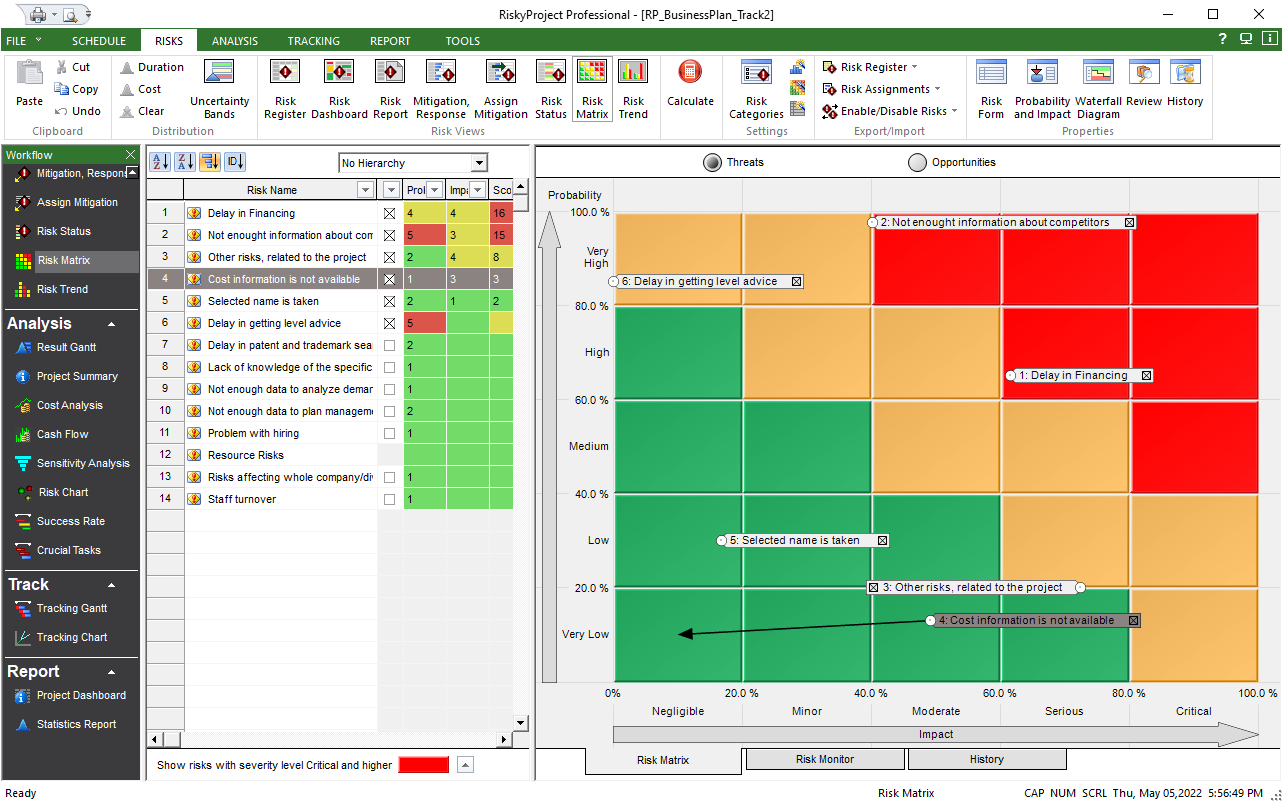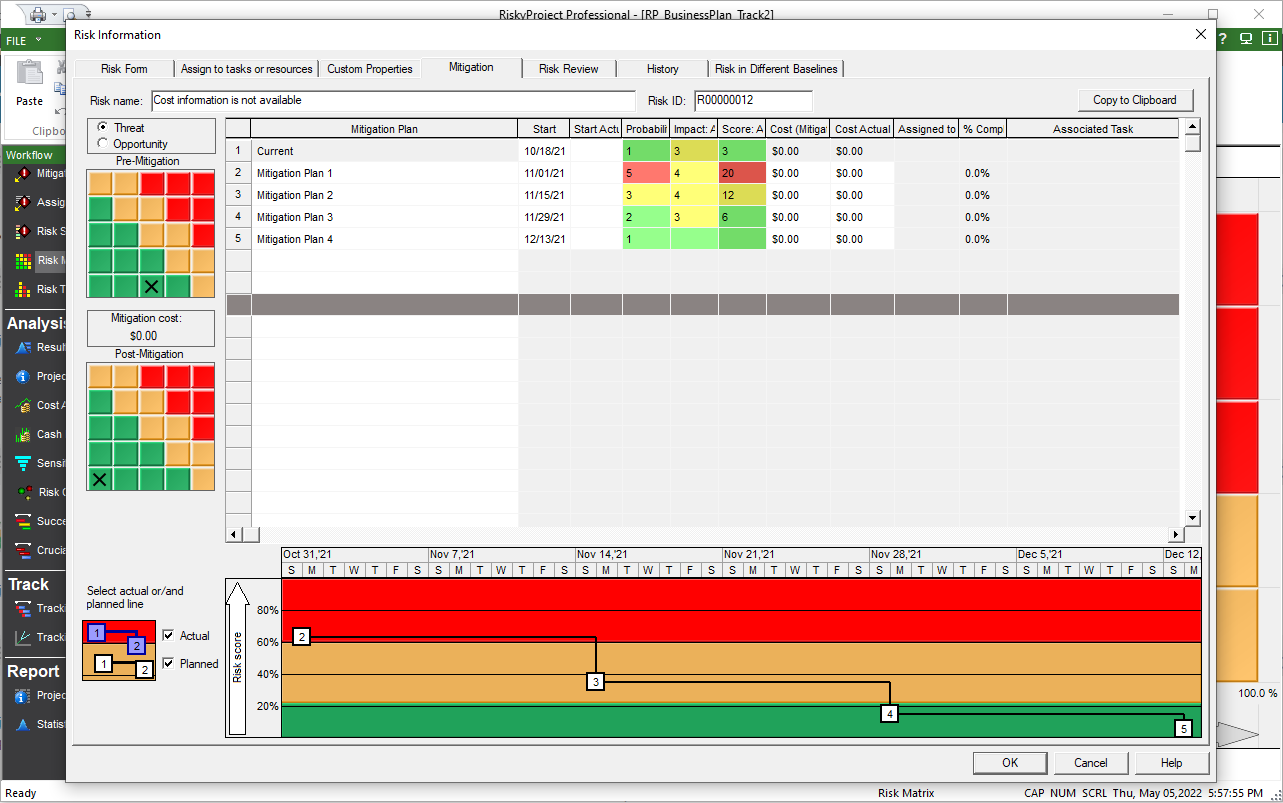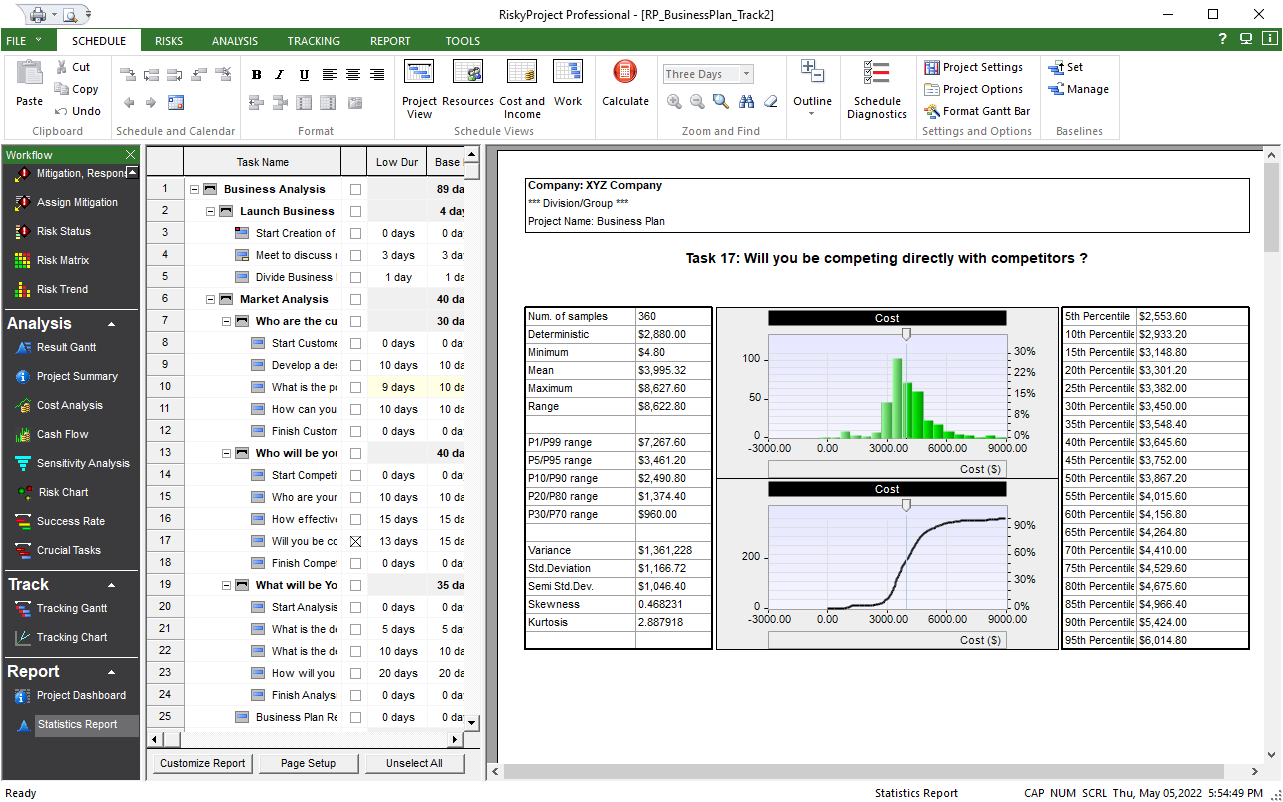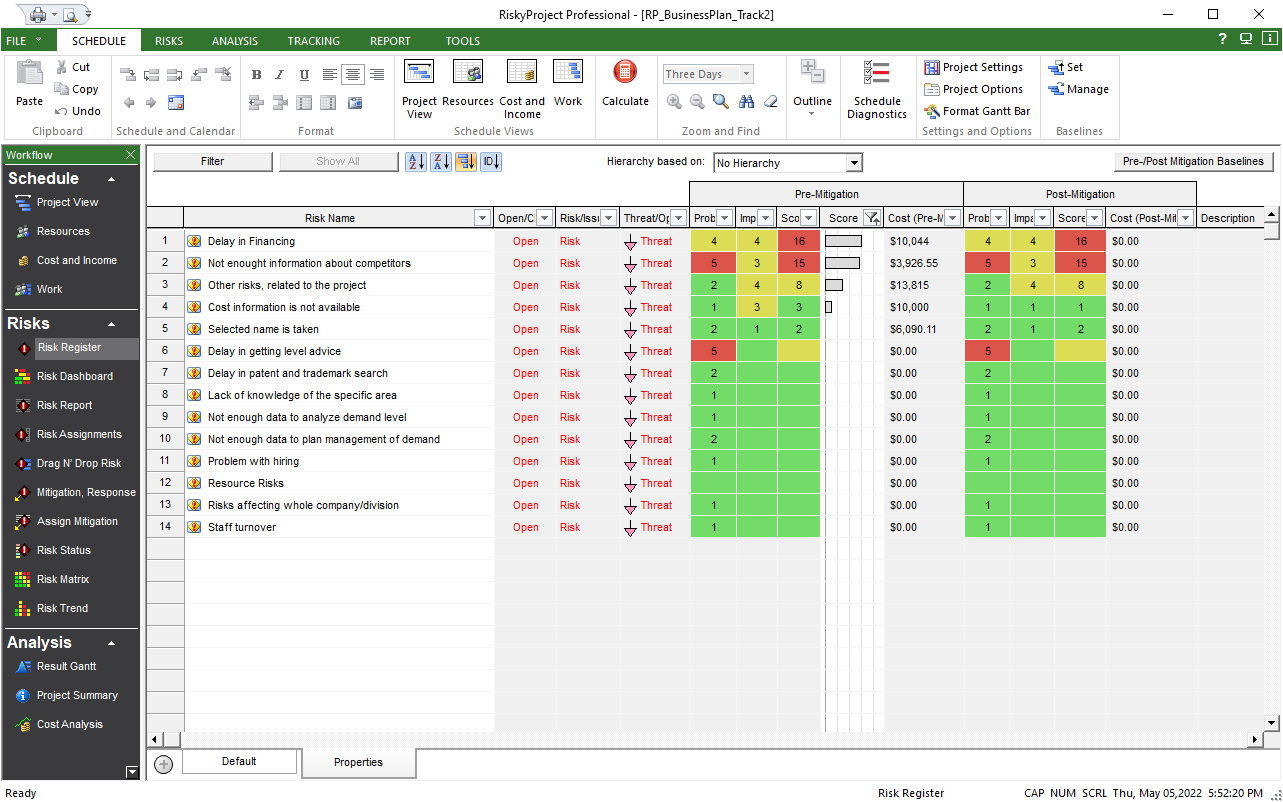RiskyProject: Project Risk Analysis Software
RiskyProject is a complete suite of project risk analysis and project risk management software in one seamless package that is easy to use, integrates with Microsoft Project, Primavera, and other scheduling and planning tools, and covers the complete risk life cycle. RiskyProject includes qualitative risk analysis and risk management as well as quantitative Monte Carlo schedule and cost risk analysis. RiskyProject also includes comprehensive Risk Register. With RiskyProject, you no longer need two or more applications to perform Monte Carlo project risk analysis and manage your project risks. They are now in one easy to use and affordable desktop software.
New major release of RiskyProject v7.2 is now available. Learn More
Project risk analysis is a process of defining and analyzing threats and opportunities affecting project schedules. Project risk analysis helps to determine how uncertainties in project task and resources affect project scope, deliverables, cost, duration, and other parameters. Project risk analysis also helps to ranks project tasks and resources based on their risk exposure, calculate overall project risk exposure, and determine efficiency of risk mitigation and response efforts. RiskyProject supports both quantitative and qualitative risk analysis and management. Cost and schedule risk analysis can be integrated and is performed using a high performance Monte Carlo simulation engine.
Integrated Cost and Schedule Risk Analysis
Project risk analysis software RiskyProject integrates cost and schedule risk analysis. Monte Carlo schedule risk analysis helps to determine the impact of risks and uncertainties on your schedule and generates risk adjusted project schedules. Risks from risk register can be quickly linked to activities using the Drag’N’Drop risk view. Sensitivity analysis helps to rank risks within a risk register and determine crucial tasks. Interactive tools can help you to assess project contingency and analyse multiple project scenarios. Cost and cash flow charts provide you easy access to how risk can impact cost and revenue streams. The joint confidence level chart allows you to analyse project duration and cost including time and non-time dependent costs.
Project Risk Analysis With Other Scheduling Software
RiskyProject includes a complete scheduling capability: you can create and modify project schedules in RiskyProject. In additon RiskyProject seamlessly integrates with Microsoft® Project so that you can run schedule and cost risk assessments either within Microsoft® Project or effortlessly export your schedule into RiskyProject for more comprehensive risk analysis and management. RiskyProject can also import schedules from other popular scheduling software. All versions of RiskyProject are also integrated with other project planning and scheduling software including Oracle Primavera, Asta PowerProject and many others.

RiskyProject: Project Risk Management Software
Project risk management software RiskyProject facilitates all steps of the project risk management process: risk identification, analysis, mitigation and response planning, and risk communication. RiskyProject performs both qualitative and quantitative project risk analysis and includes schedule and cost risk analysis using Monte Carlo simulations. RiskyProject’s risk register covers the entire risk life cycle for project, program or portfolio risks: threats, opportunities, issues, and lessons learned with their properties. Risks can be assigned to project tasks and resources. The risks can impact not only project schedule and cost, but also performance, safety, security, and other risk categories. You can create and assign risk mitigation and response plans to any risks.
Project risk management is a process of identifying managing, analysing, and controlling risks affecting projects or portfolio of projects. Identified risks are stored in Risk Register, which is a depository of project risks with their properties. Project risk management helps to determine what happens with risks during a course of project, define risk mitigation and response plans and track their execution. Project risk analysis is a part of project risk management process. Formalized integrated project risk management and risk analysis process helps to improve overall project management in organization.
RiskyProject Enterprise: Project Portfolio Risk Management and Risk Analysis Software
RiskyProject Enterprise includes an organization wide risk register. The risks from risk register can be assigned to different project and within a project to different tasks and resources. RiskyProject Enterprise supports project portfolio hierarchy and allows you to rank projects within a portfolio. RiskyProject Enterprise also provides a common depository of response and mitigation plans.
RiskyProject Enterprise includes user management functionalities: user roles and permissions, risk review and risk approval process. RiskyProject Professional or Lite are used as clients in RiskyProject Enterprise. You may easily switch from RiskyProject Professional or Lite to RiskyProject Enterprise client.
RiskyProject Project Risk Analysis and Project Risk Management Software Suite
Project Risk Management and Project Risk Analysis Consulting And Training
Intaver Institute offers training courses focused on both project risk management and project risk analysis theory and how to use RiskyProject software. The training courses can be customized for specific requirements of any organization and delivered on site. Intaver Institute also provides consulting services aimed on establishing project risk management processes within in organization. This includes project risk identification and assessment using Intaver’s software and methodologies.


